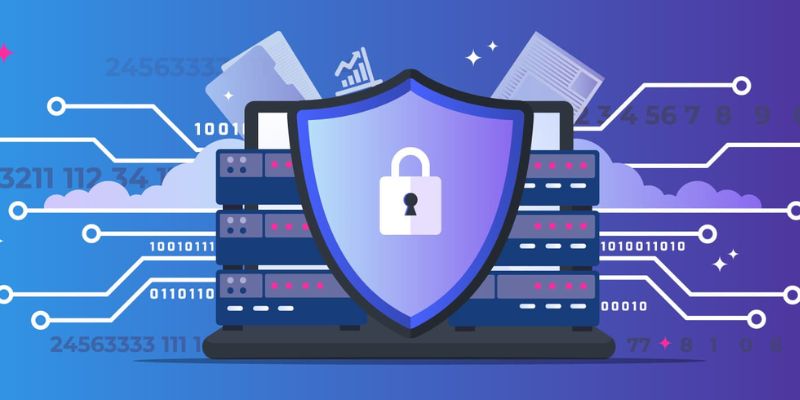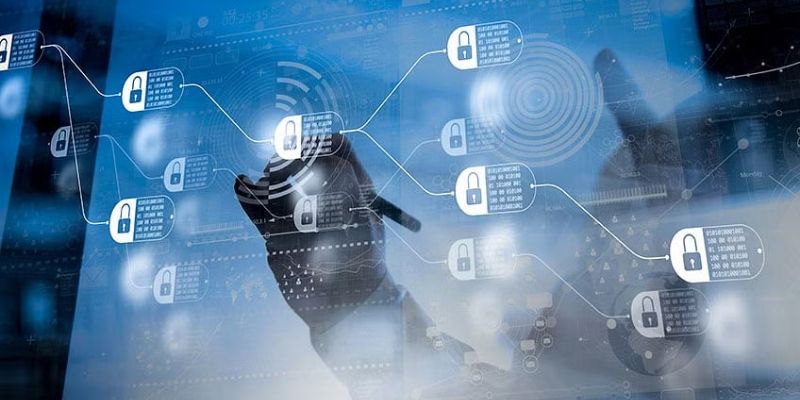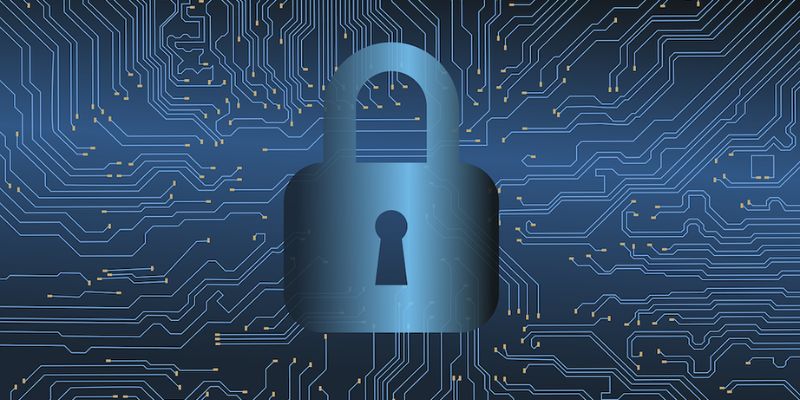If you’re keen to keep your digital coins safe, getting a firm grip on blockchain security is crucial. But what is blockchain security? It’s a blend of consensus rules and math that keeps your assets secure. Today, I’ll walk you through its core, from encryption to smart contracts, and show you how to dodge common dangers. You’ll learn how to build defenses that stand tall against even the sneakiest threats. So, gear up — it’s time to make your digital fortress unbreakable!
Understanding the Bedrock of Blockchain Security
The Role of Consensus Algorithms and Cryptographic Principles
Blockchain security is like a strong safe for your digital cash. It’s all about keeping your cryptocurrency and online dealings safe. To understand it, we must talk about two big things: consensus algorithms and cryptography. These keep the blockchain working and safe.
Consensus algorithms are rules that all computers (nodes) in a blockchain network follow to agree on things, like which transactions are valid. This way, one single computer can’t call the shots. There are different types, like “Proof of Work” and “Proof of Stake”. Proof of Work has computers solve puzzles to add new blocks to the chain. It uses lots of power but is tough to hack. Proof of Stake, on the other hand, has users show ownership (stake) in the currency to get a chance to add blocks. It’s greener and faster but needs a large stake to keep everything fair. These methods stop bad actors from messing with the blockchain.
Now let’s talk cryptography. In the blockchain world, this means secret codes that keep your information safe. Each piece of data has a unique code (hash) that’s super hard to crack. If a hacker changes one bit of a transaction, the code changes a lot! So, it’s easy to spot fakes. This “hashing” makes sure nobody messes with the blockchain.
Encryption in blockchain is about turning readable data (like your transaction) into a secret code. Only the person with the key can read it. This is important because it keeps your transactions private. Even if someone gets your data, without the key, it’s just gibberish to them.
Smart contracts are like self-working computer programs that live in the blockchain. They make deals happen all on their own, based on rules everyone agrees on. But smart contracts must be safe too. A good way is to have experts check them out before they go live.
Decrypting Encryption: How It Fortifies Blockchain
Encryption is a hero in the blockchain world. It scrambles up your info so that only those who are meant to see it, can. With your digital cash, you don’t want strangers snooping. That’s why encryption matters a lot.
Each transaction in a blockchain has a digital signature. It’s like a fingerprint that says you’re you. This is part of encryption. It makes sure the money is really yours to spend. The “public” and “private” key idea is key here. Your “public” key is out there for everyone, but your “private” key is only yours. You sign your transactions with your private key, and others use your public key to make sure it’s legit.
Hashing and data security go hand in hand. Hashing is like a super complex label on your data. This label changes even if just a tiny part of your data changes. So, if a crook tries to meddle with a block, everyone will notice because the hash label won’t match up.
Decentralization and safety are close pals in the blockchain. Since everyone keeps a copy of all transactions, it’s hard for hackers to trick the system. You’d have to hack tons of computers at once, which is not easy. This “decentralization” helps everyone by making the blockchain tough to break.
So, blockchain security isn’t just cool—it’s crucial. It’s a mix of math, computer science, and smart rules that keep your digital assets safe. It’s like a vault that’s everywhere and nowhere, all at once. This is why we trust blockchain with our digital valuables, be it for buying stuff or just keeping our cryptocurrency tucked away safely.
Protecting Your Cryptocurrency: Identifying and Mitigating Risks
Recognizing Common Security Threats in Blockchain
You must know the bad guys to stay safe. They want your digital coins, your data. In blockchain, a bad guy can try a 51% attack. What’s that? They control most of the network and mess with it. But, we beat it with more network nodes. More nodes, less risk.
Encryption in blockchain hides your data in code. It’s tough to crack. We use unique math called hashing to keep your stuff safe. But, watch for smart folks with big computers. They could break codes one day.
Your wallet holds your cryptocurrency. Keep it safer with strong keys—your secret passwords. And don’t share them! Be on guard for tricksters trying to steal your key or trick you into bad deals.
Speaking of deals, smart contracts are like digital promises. They run when certain things happen. But they can have bugs. So we check them, really check them, to make sure they’re good.
Smart Contract Safety: Auditing and Best Practices
Smart contracts are super handy but risky if they’re wrong. Auditing means going over these contracts with a fine-toothed comb. We look for holes, places where they could break or let thieves in.
When we find a flaw, we jump on it, fix it fast. Best practices mean we keep doing things that work. We keep learning, improving, and teaching so your smart contracts stay tight and right.
Blockchain is like a steel vault for your digital gold. We keep the vault closed tight with rules everyone follows. This is blockchain governance. Plus, we double-check each other’s work. No sneaky moves here.
We know bad guys never rest. So, we don’t either. We’re always getting better at keeping your cryptocurrency safe. Your digital treasures matter. And we’re here to guard them, every step of the way.
Establishing Robust Defense Strategies
The Significance of Distributed Ledger Security and Node Protection
Protecting our digital money is like locking our doors at night. We must keep bad guys out of our blockchain network. Nodes are like guards. Each node holds a copy of all transactions. This makes hacking tough, like trying to rob a store with many guards. Nodes also check new transactions to make sure they’re real.
Secure nodes mean a safe blockchain. They stop bad actors from doing harm. They make sure all copies are the same. This protects the network and your money. We keep nodes safe with encryption and careful access control. Encryption scrambles data so only allowed people can read it. Access control keeps the list of who can interact with the node small.
We also make nodes tough to find and attack. This hides them from hackers. We spread them out all over the world. Spreading out nodes makes the network tough and strong.
Strategies to Prevent 51% Attacks and Remediate Double Spending
A 51% attack is when one person or group gets more than half of the network power. They can then harm the network. They could double spend, which means spending the same money twice. This breaks trust in blockchain.
We stop this by using more than one method to agree on new data. These methods are called consensus algorithms. They are rules for how nodes agree on new blocks. Some use a lot of power, like Proof of Work. Others, like Proof of Stake, use less. This makes sure that not just one person can decide what’s true.
We also check more than just most of the network. We check lots of parts to make sure one big miner can’t cheat. We keep tabs on how much power people have. This makes us ready to act if one gets too much.
Preventing double spending means tracking all spends carefully. Each spend is checked many times. It’s like having a receipt that everyone signs. We also spread out the power so no one has too much. This keeps spending honest.
We teach people how to run nodes that are hard to attack. People should know the right ways to keep their nodes safe.
Blockchain security is like a team sport. Everyone has to play their part. We watch out for each other and keep the network strong. By understanding how to guard our blockchain, we win against hackers. We must always stay sharp and ready to defend our digital world.
The Future-Proofing of Blockchain Security
Quantum Computing: A Looming Threat to Current Encryption?
You might ask, “What’s this fuss about quantum computing?” Well, it’s a big deal for blockchain security. Imagine a super-smart computer that can solve puzzles faster than anything before. That’s a quantum computer! And the puzzles they could solve could break the codes keeping blockchain secure.
Our current locks on digital treasures use math that takes ages for regular computers to solve. But quantum computers laugh at such math! They could crack them in no time. So, we must get ready. We must make stronger locks. These locks will need new math that quantum computers can’t laugh at.
Mitigating Risks While Scaling: Balancing Security with Growth
Now, let’s chat about growth. We want our blockchain garden to grow, but no one likes weeds. In blockchain, as things get bigger, more weeds pop up. These weeds are risks that can hurt security. To grow right, we must keep balance. That means looking after each plant, or in our case, each block in the chain.
Each step we take to grow our blockchain must be careful. We must watch over how we talk to each other on the network, as well as how we agree on things, or the consensus. The way we protect data with tricky math, or encryption, needs to stay tough as nails.
As we add more pages, or blocks, to our ledger, we can’t let any go bad. If even one does, it could spoil the bunch. That’s why checking and double-checking every smart contract is super key. It’s like making sure every door and window is locked tight before you grow bigger.
In short, when you batten down the hatches properly, even as you sail into new waters, your blockchain ship stays safe. It’s all about using our heads to make sure our digital gold stays locked down tight, even as we welcome more folks to the blockchain party.
In this post, we dug into the core of blockchain security. We explored how consensus algorithms and cryptographic principles keep your crypto safe. Understanding encryption showed us its power to block hackers. We moved on to spotting risks in blockchain and keeping smart contracts tight. With best practice audits, you can steer clear of trouble.
Then, we looked at shielding our ledger and nodes from attacks. Knowing how to stop 51% attacks and double spending can save your digital cash. Last, we thought about what’s next for keeping blockchain secure. Even with quantum computers on the rise, we learned that we can grow but still keep our guard up.
Here’s the take-home: Staying safe in blockchain means learning and applying these tips. With every step, make sure your security keeps up. It’s a mix of being smart and aware. Let’s keep our crypto safe and stay sharp out there.
Q&A :
What Does Blockchain Security Entail?
Blockchain security refers to the techniques and strategies that are applied to ensure that blockchain technology operates securely and without interference. It encompasses the protection of data integrity, the guarding against unauthorized access, and the prevention of malicious attacks within a blockchain network. Strong cryptography is often used alongside consensus algorithms to uphold a resilient structure.
How Is Blockchain Security Achieved?
Achieving blockchain security involves a multi-faceted approach. It includes the use of cryptographic hashes that ensure data integrity, the implementation of consensus protocols like Proof of Work or Proof of Stake for validation of transactions, and smart contracts to enforce rules. Additionally, blockchain security also relies on network decentralization to avoid single points of failure and increase the difficulty of launching successful attacks.
Why Is Security Important in Blockchain Technologies?
Security in blockchain technologies is crucial because it ensures trust and reliability in the network. Given that blockchains often support cryptocurrencies and other valuable digital assets, high security is essential to prevent theft, fraud, and corruption. Furthermore, in applications such as supply chain or identity verification, security guarantees that the recorded data is accurate and has not been tampered with.
What Are The Main Threats To Blockchain Security?
The main threats to blockchain security include 51% attacks, where a user or group gains majority control of the network’s mining power and can manipulate it; phishing scams aimed at stealing private keys; smart contract vulnerabilities; and Sybil attacks, where the network is overtaken by numerous fake identities. As blockchains evolve, so do the techniques used to compromise them, thus continual enhancement of security measures is necessary.
How Can Individuals Contribute To Blockchain Security?
Individuals can contribute to blockchain security by practicing good cyber hygiene such as securing private keys, using reputable and updated blockchain software, not sharing sensitive information, and being vigilant about potential scams. Community members can also participate in network consensus if applicable, and developers can contribute by auditing code and designing blockchains with security in mind from the outset.


